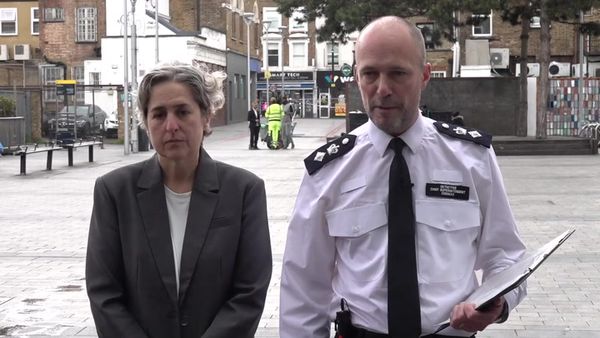Is solving Bengaluru’s congestion crisis an intractable puzzle, tougher than rocket science? Not really. Every sustainable mobility expert will point at one clear solution, screaming out for attention and financial outreach: Bengaluru Metropolitan Transport Corporation (BMTC) buses. Double their numbers, make them reliable, comfortable, accessible, and watch a dramatic decongestion.
Now, for any government genuinely keen on resolving the issue, this should be a low-hanging fruit. For years, multiple governments were told how to tackle the public transport problem smartly with technology, multi-agency coordination and focused funding. The latest is a research booklet centred on BMTC planning and operations, developed by the Indian Institute of Science’s Centre for Infrastructure, Sustainable Transportation and Urban Planning (CiSTUP).
Reliability before frequency
A key finding by the CiSTUP team is reliability. If commuters know that a bus always reaches on time at a particular stop on a route every day, there is a reliability boost. Even if the frequency of BMTC buses is low on that route, ridership of that “predictable” bus will increase.
This is precisely what the research team means when it states: “On medium to high-frequency routes, BMTC will gain more ridership and passenger kilometres by increasing service reliability than increasing service frequency.” The team now wants to devise a method to forecast bus ridership changes with improvements in last-mile connectivity, price changes, metro expansion and pricing of other commute modes.
The BMTC, as its Managing Director Sathyavathi G. put it, might have tied up with IISc to devise implementable solutions. But the big task is to follow through. As mobility activist Sathya Sankaran asks, “How is BMTC implementing the findings in different routes? Take each of the suggestions and implement them on one chosen route. For instance, the research says the Bus Priority Lane has led to a 4-28% improvement. So make it work. If the BMTC app is not performing well as the study indicates, think about making it better.”
Open data, innovate
He says there is a lot of capacity in research institutions such as CiSTUP to take BMTC to the next well. “But, in the last decade, the BMTC has not innovated much. They tried an app, but it could have been done in so many different ways. They could have allowed many others interested in building that app, giving their data to be used. Even now, their data is closed and is shared only with these institutions,” he explains.
“Unlike politicians and bureaucrats, the power of the bus is well understood by the scientific community. Capital investment and infrastructure needs for buses are minimal. Bus routes can be dynamically adjusted based on demand, and overall return on investment is considerably higher for bus than any other form of mass transport,” notes Srinivas Alavilli, Fellow, World Resources Institute (WRI) India.
However, he points out, “There is a stigma attached to buses in our society. It is seen as a poor person’s transport and not meant for those who ‘made it’ in life. Changing perceptions about buses is critical for saving our cities from collapsing under their own weight as the number of personal vehicles is exploding year after year.”
Metro or suburban trains cannot be successful without the bus playing a vital role as a first and last-mile solution. “Thanks to the stupendous success of the Shakti scheme, the Karnataka government is finally acknowledging the need for more buses and staff. BMTC must (consider all these recommendations by CiSTUP) modernise their operations, open up data to enable innovation and integrate with other modes of transport and engage citizens in a constructive manner,” Srinivas says.
BMTC, Metro can coexist
A debatable finding of the CiSTUP report is this: “Bus routes with high overlap with metro lines lose riders to metro.” The question is not about the solution offered, that “feeder services and routes with some overlap with Metro lines can help both BMTC and Metro.” The key issues are affordability and access, as Shaheen Shasa from the Bengaluru Bus Prayanikara Vedike points out.
“There are two things with the metro,” she explains. “One, the metro is more expensive than the bus. Second, for short-distance trips, it is also too much of an effort to get into and out of the Metro system and walk a long way to the platform. It is not as simple as walking to the bus stop. Metro is not going to be a solution for everyone.”
Shaheen’s point is this: “Even on routes where the metro and the BMTC coexist, there is still a case to continue the bus service routes. There is a difference in the people using it both in terms of social strata and travel distance. Both need to be continued, they don’t overlap or substitute each other.”
Last-mile options
Connecting the last mile from home/workplace to the bus stop is a critical issue, irrespective of the commuter’s social strata. The report highlights this point as well. But Shaheen offers another perspective: “Many walk to cover the last mile. If it is too much, they are also forced to take the auto. So even if they can’t afford it, they have to spend as they have to get to work or school.”
No city-wide comprehensive study has been conducted to understand how widespread the problem is. “But generally, it is an across-the-board issue. People have to walk for 2-3 km, particularly in many areas in the periphery. The problem is there even in inner areas such as L.B. Shastri Nagar, Kasavanahalli, Jail Road on the Sarjapur Roadside,” she says.
The last-mile issue only gets worse in areas that branch out of the Outer Ring Road (ORR). BMTC has adequate service along the road, but it thins out considerably farther away. There is a clear data gap on how patchy the services are. “BMTC does not have a full-scale feeder concept right now. Only a detailed study can tell whether it should go for a hub-and-spoke model, a trunk feeder network or a mix of these in different areas. The sampling has to represent all parts of the city served by BMTC.”
Addressing bus-bunching
Bus bunching is another issue highlighted by the CiSTUP report. This occurs when two or more buses, originally scheduled with proper headway, end up running on the same route simultaneously. This happens typically due to one bus being unable to adhere to its schedule. “This uncertainty in transit time leads to delayed arrivals at stops, longer passenger wait times and overcrowded buses,” the report states.
To address this issue, bus-holding is the most commonly adopted methodology. Under this method, the arrival of buses at control points is delayed. The duration of the bus wait is regulated based on the position of other buses and current traffic conditions. The CiSTUP team used recurrent neural networks to boost the accuracy of Estimated Time of Arrival (ETA) predictions of the buses.
The team’s experiments on BMTC route 276 showed that the application of Machine Learning (ML) methods enhances ETA predictions, and bus-holding can prove effective in reducing bus-bunching.
Pilot programme
To scale up, CiSTUP has proposed to conduct comprehensive pilot programmes on a single route for several weeks to quantify the benefits and investigate their impact on ridership. Sathya Sankaran reiterates that BMTC should give them the bus to see ridership patterns. “How else will you innovate if you don’t participate? They should be telling, take the route and show us how it is done. The routes should be available for experimentation. Across the world, that is how it works,” he says.






